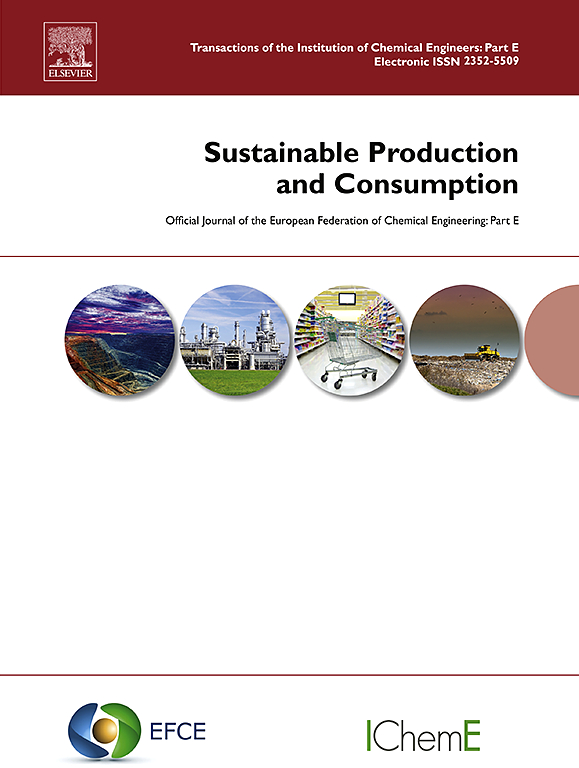Mapping the intersection of planetary boundaries and environmentally extended input-output analysis: A systematic literature review
IF 9.6
1区 环境科学与生态学
Q1 ENVIRONMENTAL STUDIES
引用次数: 0
Abstract
Since the development of the planetary boundaries (PBs) framework, efforts have been made to operationalise PBs at sub-global scales, from cities to continents. Many of these efforts employ Environmentally Extended Input-Output Analysis (EEIOA), which integrates environmental and material considerations into supply chain analyses. Despite the growing body of research combining PBs and EEIOA, the research is dispersed across various studies and disciplines, necessitating a systematic synthesis to consolidate findings, identify gaps, and guide future research. To address this need, we conducted a systematic literature review focusing on research that integrates the PB framework with EEIOA. Our aim was to answer several key questions, including: What are the most common methodological choices used in studies combining PBs and EEIOA? How has EEIOA informed policy decisions related to living within PBs? Using Scopus and Web of Science, we conducted a comprehensive search covering publications from January 2009 to April 2024. Our review revealed four main methodological frameworks in the literature: “footprint v/s allocated PB”, “exceedance footprint”, “scenario analysis”, and “optimisation modelling”. Climate change emerged as the most extensively studied PB, followed by land-system change, freshwater use, nitrogen flows, and phosphorus flows. Policy guidance was central in 50 % of the studies, with 61 % following a responsibility narrative, 15 % human well-being, and 9 % examining socio-economic implications. This review provides critical insights into the intersection of PB and IOA, highlighting methodological trends and gaps. By synthesizing findings, it advances the integration of these frameworks, supporting their application in sustainable consumption policies and broader environmental strategies.
绘制地球边界和环境扩展投入产出分析的交叉点:系统的文献综述
自从制定了行星边界框架以来,已经努力在亚全球尺度上,从城市到大陆,实施行星边界。其中许多工作采用了环境扩展投入产出分析(EEIOA),它将环境和材料考虑集成到供应链分析中。尽管结合PBs和EEIOA的研究越来越多,但研究分散在不同的研究和学科中,需要系统的综合来巩固研究结果,确定差距,并指导未来的研究。为了满足这一需求,我们进行了系统的文献综述,重点研究了将PB框架与EEIOA相结合的研究。我们的目的是回答几个关键问题,包括:在结合PBs和EEIOA的研究中,最常用的方法选择是什么?EEIOA如何为与生活在PBs内相关的政策决策提供信息?利用Scopus和Web of Science,我们对2009年1月至2024年4月的出版物进行了全面的检索。我们的回顾揭示了文献中的四种主要方法框架:“足迹v/s分配PB”、“超额足迹”、“情景分析”和“优化建模”。气候变化是研究最广泛的PB,其次是土地系统变化、淡水利用、氮流和磷流。50%的研究以政策指导为中心,61%的研究遵循责任叙事,15%的研究关注人类福祉,9%的研究关注社会经济影响。这篇综述为PB和IOA的交叉提供了重要的见解,突出了方法的趋势和差距。通过综合研究结果,它促进了这些框架的整合,支持它们在可持续消费政策和更广泛的环境战略中的应用。
本文章由计算机程序翻译,如有差异,请以英文原文为准。
求助全文
约1分钟内获得全文
求助全文
来源期刊

Sustainable Production and Consumption
Environmental Science-Environmental Engineering
CiteScore
17.40
自引率
7.40%
发文量
389
审稿时长
13 days
期刊介绍:
Sustainable production and consumption refers to the production and utilization of goods and services in a way that benefits society, is economically viable, and has minimal environmental impact throughout its entire lifespan. Our journal is dedicated to publishing top-notch interdisciplinary research and practical studies in this emerging field. We take a distinctive approach by examining the interplay between technology, consumption patterns, and policy to identify sustainable solutions for both production and consumption systems.
 求助内容:
求助内容: 应助结果提醒方式:
应助结果提醒方式:


